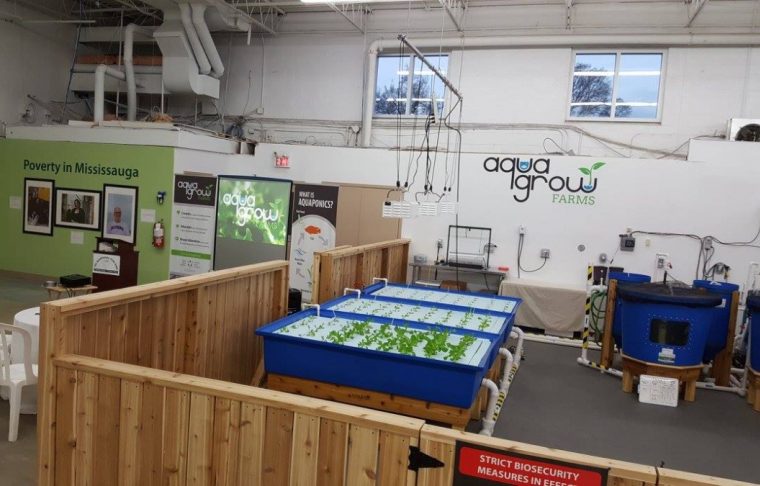Providing healthy foods isn’t easy for food banks, especially in communities with a large disadvantaged population. The aquaponic food bank farm offers these non-profits a solution to the dilemma of an inadequate supply of fresh foods. Not just because of its combination of meat and vegetable harvests, the system is also highly sustainable. So, it’s unsurprising that the first aquaponic farm launched last week at a Canadian food bank.
While a number of aquaponic food bank farms have sprouted up in the US in recent years, it hasn’t spread into Canada until now. Of course, the Mississauga Food Bank’s new renewable source of fresh food didn’t happen overnight. This Greater Toronto Area non-profit has worked on this project for 3 years.
It began with shrinking donations of fresh produce. On a quest for the answer to providing food bank clients with a continuous balanced diet, the idea of growing their own took root. A sustainable food production system would allow them to stop being so dependent on donations. Feeding the hungry calls for sustainable community service. After all, supplying fresh, healthy food is a big order to fill from inside a food desert in a community where over 25% of the residents live below poverty. Mississauga, Ontario, has a population of 750,000, and about 182,000 of them need food assistance.
Just like anyone else, the next step is figuring out what system will provide you with what you need. And then… how does it work? How do we make sure that we don’t have crop failure? How do we keep our fish healthy? These are not the easiest questions to answer! So, the food bank turned to Nelson and Pade in Wisconsin.

The first crops of lettuce at the ribbon cutting ceremony.
(Courtesy of Nelson and Pade)
Diving into aquaponic farming is nothing like sticking a few seeds in the soil. Someone had to learn the ropes and be responsible for the daily management of the system and its inhabitants. In-house farmer Colin Cotton traveled to Wisconsin for training and education through a University of Wisconsin program.
After learning what you need and how to use it, the next hurdle is covering the initial cost of the system and stocking it. For the Mississauga Food Bank, the generosity of the Ontario Trillium Foundation provided funding for the equipment and two years’ operating costs.
The actual construction of AquaGrow Farms began a few months ago in August. Rebecca Nelson from Nelson and Pade helped build the system and attended the launch event too. They love seeing their aquaponic farm systems in action feeding people.
The community was invited to check out Canada’s first aquaponic food bank farm during the ribbon-cutting event on November 23rd. Mississauga Food Bank is very excited about growing fresh lettuce and fish for their clients. They’re holding interactive educational tours; Education is a big part of this addition to the charity. And while they’re producing food for their clients, they want to spread awareness of the true scope of healthy food shortages too.
While they’re starting out small, Mississauga Food Bank has become a national leader in their industry. They hope other food banks will be inspired to follow suit. With fresh foods being missing from the diets of the disadvantaged everywhere, it’s not likely they’ll be the only aquaponic food bank farm in Canada for long. Check out their latest developments!
Source: CBC News